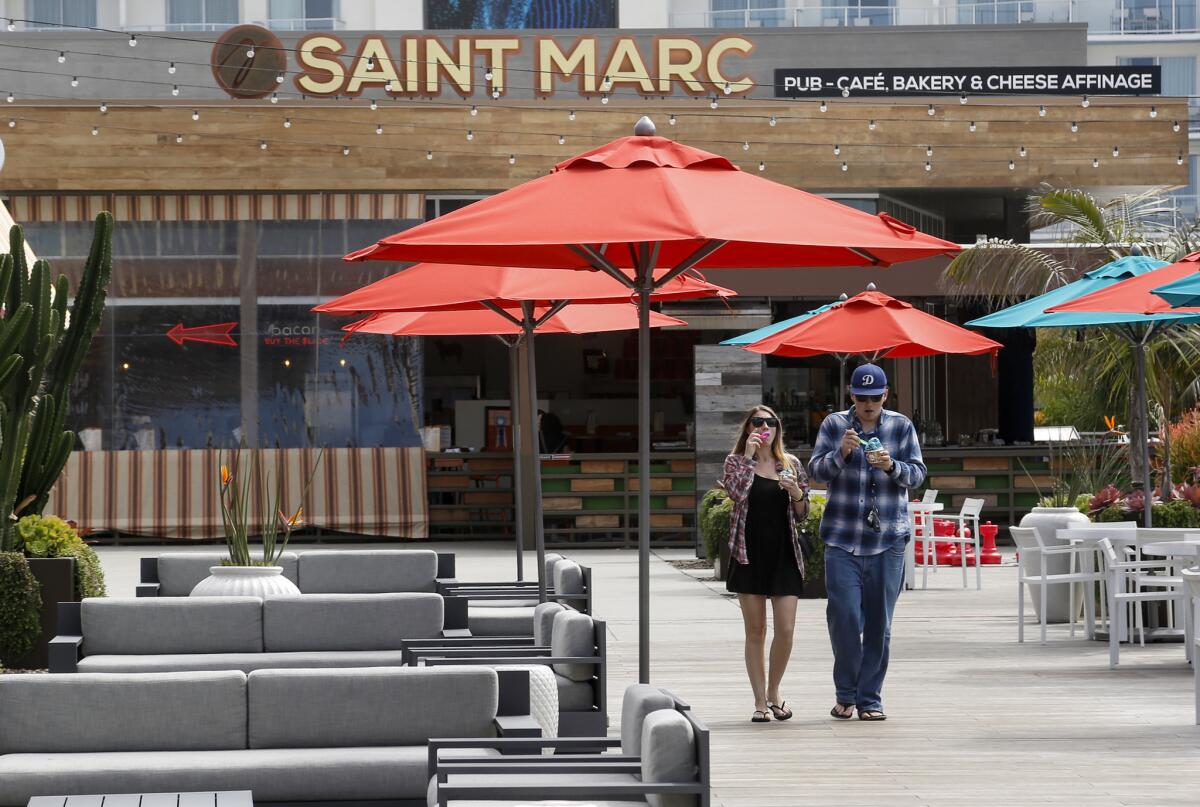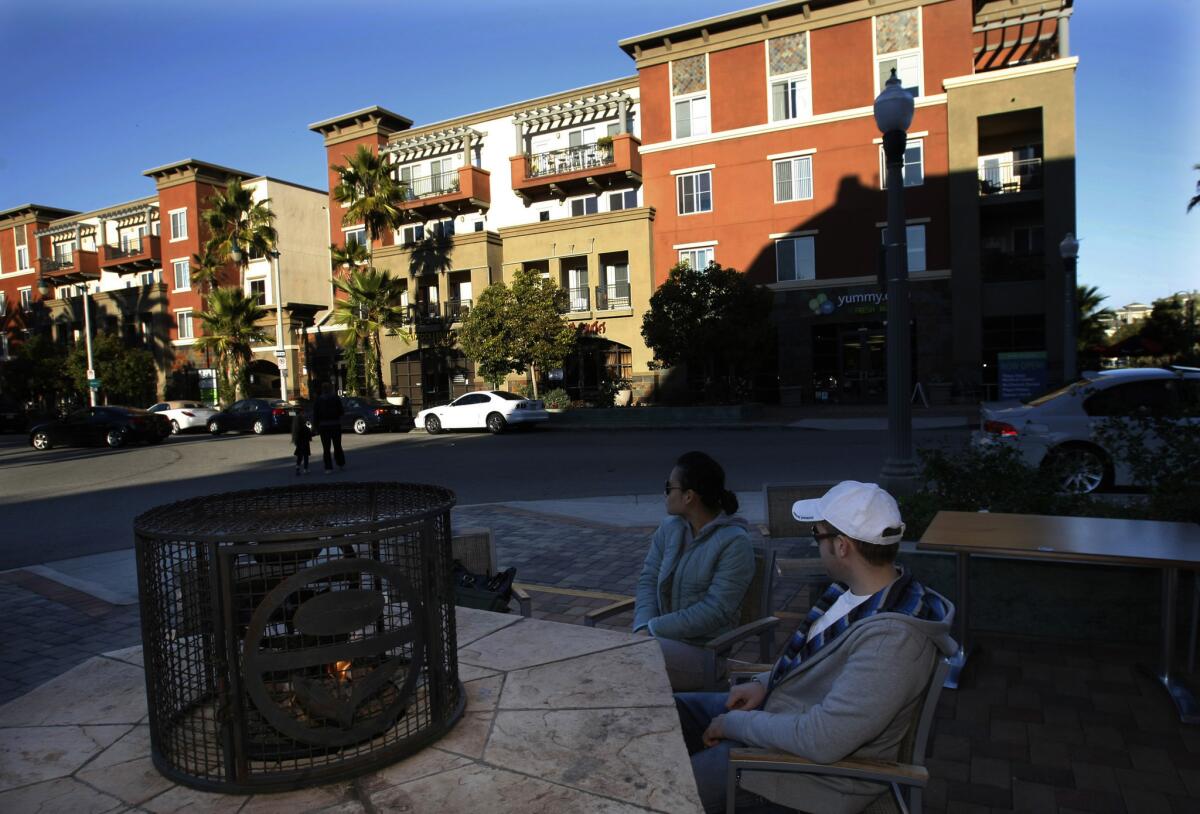New real estate developments abound up and down the coast, but challenges persist
- Share via
Few residential properties are as desirable as Southland surf and turf, or as difficult to develop.
In the ocean-hugging communities stretching from Malibu to Dana Point, builders face intense demand for limited space, resistance from regulators and residents, and logistical and environmental challenges.
“This will always be some of the most coveted real estate in California,” said William A. Witte, chief executive of real estate company Related California. “Because of that supply and demand imbalance, the cost of land has escalated significantly.”
Still, some seaside areas are undergoing bursts of activity.
Playa Vista -- home to offices for Facebook, Google and Microsoft -- has new residential units for sale in the Runway mixed-use complex as well as dozens of condos in the Seabluff project set to be completed in 2018.
In Marina Del Rey, developer AMLI is wrapping up construction on 585 residential units. The $165-million development, which broke ground two years ago and is designed to look like a boathouse, also features outdoor areas and a retail component.
In San Pedro, the first of 676 single-family homes, condos, flats and town houses in the Highpark housing plan is slated for completion this year, with the rest set to be finished by 2021. Initial plans to build 2,300 homes quickly met with controversy and were scaled back.

Huntington Beach is particularly busy. The Pacific City complex broke ground in the fall after a fraught, decades-long development process and this year began welcoming tenants into the first of its 516 luxury units. The residences, marketed as “classic Southern California beach living,” are part of a retail and hospitality project spread across 31 acres and three developers.
Developer Signal Landmark wants to build 36 town homes at its Windward project. The site for Shea Homes’ Parkside Estates, which will feature 111 single-family homes, is undergoing grading and infrastructure installation. Near the Bella Terra Mall, the 510 dwellings of Pedigo Products’ Monogram Apartments plan are halfway through construction.
Several more projects -- mixed use, town homes, single-family homes -- are also in the works in Huntington Beach. Many plans include provisions for habitat preservation and parks.
Because of the higher cost to live by the beach, such properties are bought more often by wealthy baby boomers looking for retirement residences and second homes. Around Santa Monica and Venice, the tech industry is attracting an influx of young professionals hoping to participate in the start-up scene.
But there’s not much room to grow. Often, only luxury developers are able work out profitable margins, and then only by pairing with the government or by crafting mixed-use proposals that combine residential units with retail and entertainment options.
“Affordable housing by and large is not economically viable on expensive land,” said Stuart A. Gabriel, director of the Ziman Real Estate Center at UCLA.
Winning government permission is also difficult. The California Coastal Commission has purview over oceanside development, and developers said the agency tends to favor projects that are open to the public -- such as hotels and retail outlets -- over private residential buildouts.
Approvals, always difficult to get, are even more of a struggle now, Witte said.

Related California wrapped its most recent Southern California coastal project three years ago in Santa Monica, with help from the city. The Ocean Avenue South complex -- the first to be built on Ocean Avenue in more than two decades -- features condos and rental units.
“It was a hugely successful public-private partnership, but it was also unique and difficult to replicate,” Witte said.
Many coastal residents are development shy, resisting construction larger than a small cluster of homes and raising concerns about traffic congestion and building density. Add in environmentally sensitive marine and onshore habitats, and likelihood of resident-developer clashes rises.
In Newport Beach, the proposed 900-home Banning Ranch mixed-use development continues to hang in limbo after years of being embroiled in controversy.
The state Supreme Court in March ordered builder Newport Banning Ranch to amend its environmental impact report before continuing the project. And the company sued the Coastal Commission after the agency denied the developer’s latest plan in September.
“Banning Ranch is one of the last large, privately owned and undeveloped coastal parcels,” said Terry Welsh, president of Banning Ranch Conservancy, an environmental nonprofit that brought the case and hopes to preserve the property by purchasing it outright. “There are just no more really big lots left.”
Increasingly, constituents are also concerned about climate change and its effects on the coastline. Building sites in Florida and New York already feature safeguards against the effect of global warming and coastal erosion -- Southern California construction could soon follow suit.
MORE FROM HOT PROPERTY
My Favorite Room: Jillian Michaels
Blending modern design and technology at Pasadena new build
Family of West Virginia Gov. Jim Justice to auction off three historic plantations in Virginia
More to Read
Sign up for Essential California
The most important California stories and recommendations in your inbox every morning.
You may occasionally receive promotional content from the Los Angeles Times.







